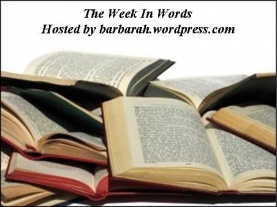I’ve read my fair share of Laura Ingalls Wilder biographies for children–most (if not all) of them fitting into the glossy paged photograph-laden category. Each biography has a tendency to veer one of two directions: either it focuses almost entirely on the information Laura shared in her Little House books (thereby adding nothing for the avid reader) or it focuses almost entirely on the ways reality deviated from the Little House books (thereby destroying a young reader’s trust in the essential historicity of Wilder’s novels.)
Laura Ingalls Wilder: A biography by William Anderson is as different from those biographies as a book can be. It is not a glossy picture book with minimal text. It is not simply a retelling of Laura’s Little House books. Neither is it a critical look at how Laura changed her story.
Instead, it’s an honest to goodness biography written at a reading level (and in a style) similar to Laura’s “Little House” books. Anderson explicitly mentions some things that are different from the books (for instance, that Laura was actually much younger than described in Little House on the Prairie when her family settled in Indian territory); but he mostly writes Laura’s story as it occurred, letting the Wilder fan take notes of where stories were slightly altered or moved to a different context in the Little House books.
I loved it.
I think this book would have been very accessible to me in the throughs of my first Little House obsession (age 6-8), and would have added to my understanding of pioneer life (and Laura’s life in particular) without dissuading me from love for the Little House series.
It is a book of substance not of fluff, written simply but not condescendingly. I recommend it highly.
Having said all that, I think it is important that I clarify. This book is written for an elementary to middle school audience, so it doesn’t go into great detail about certain things. Those who are interested in a more in-depth discussion of Pa’s squatting on an Indian reservation or of other harsh components of pioneer life will be disappointed. Don’t expect an adult biography. But, for what it is, a children’s biography of a beloved author, this is a very good book.
 I read this title as a part of Barbara H’s Laura Ingalls Wilder Reading Challenge. You can check out what other people have been reading at her wrap up post.
I read this title as a part of Barbara H’s Laura Ingalls Wilder Reading Challenge. You can check out what other people have been reading at her wrap up post.
Rating: 4 stars
Category: Children’s biography
Synopsis: A biography of Laura Ingalls Wilder from birth to death; written for an elementary to middle grade audience.
Recommendation: Definitely recommended for the target audience (although older folks can enjoy it too).

